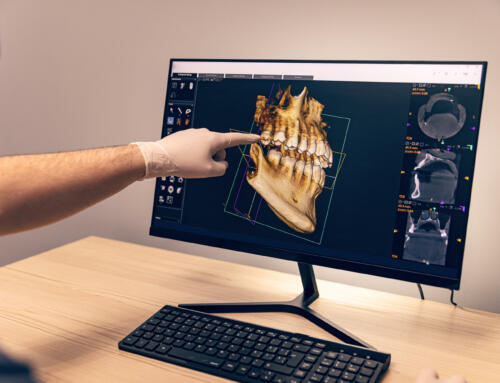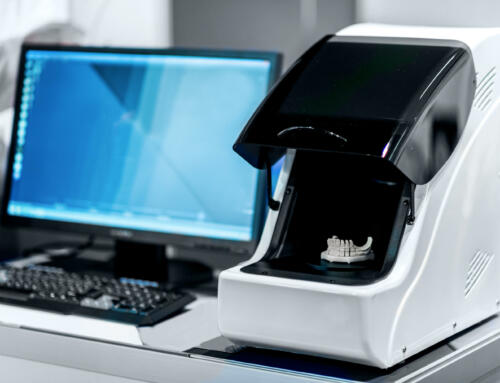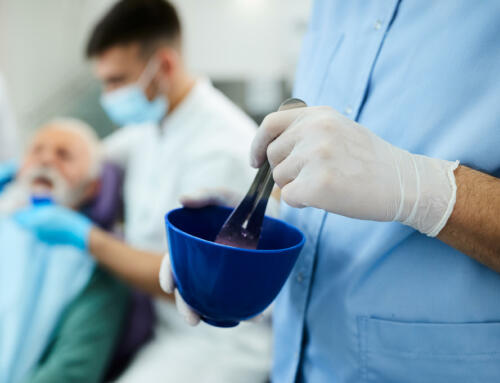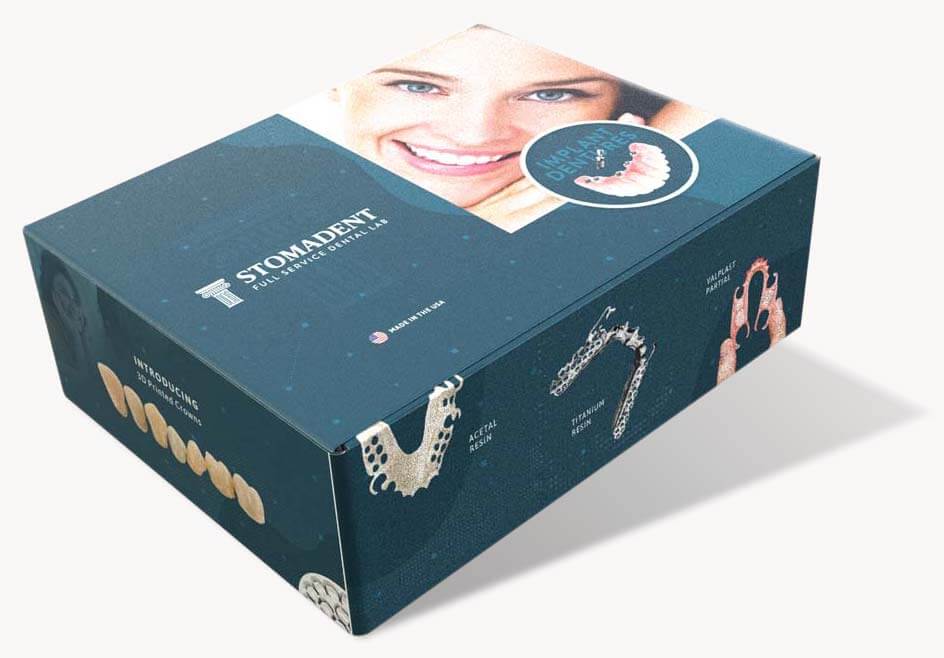
By David Hudnall, DMD
How many times has this happened: a patient presents with an existing implant overdenture that does not fit. Although the denture snaps into place correctly, the patient complains the denture feels loose or that a lot of food gets under the denture. The patient may also complain that they can’t chew well.
Through clinical observation and a check of the occlusion, you find that the posterior aspect of the denture is no longer fully engaging in occlusion. The denture appears to be riding high where it is supported by the implants and seems to have dropped down slightly in the posterior because of residual tissue shrinkage or additional bone loss. What do you do?
The goal is to create increase denture stability and improve the patient’s chewing ability. Relining the denture is one course of action, nut before committing yourself to a reline, ask yourself if a reline is an appropriate treatment for this patient.
- Is the bite and vertical dimension of occlusion correct?
- Has the patient been wearing an ill-fitting denture for so long that the teeth are worn and the bite has changed?
- Is there a multi-millimeter space between the posterior teeth and opposing dentition during full occlusion?
- Would the patient be better served by an alternative treatment?
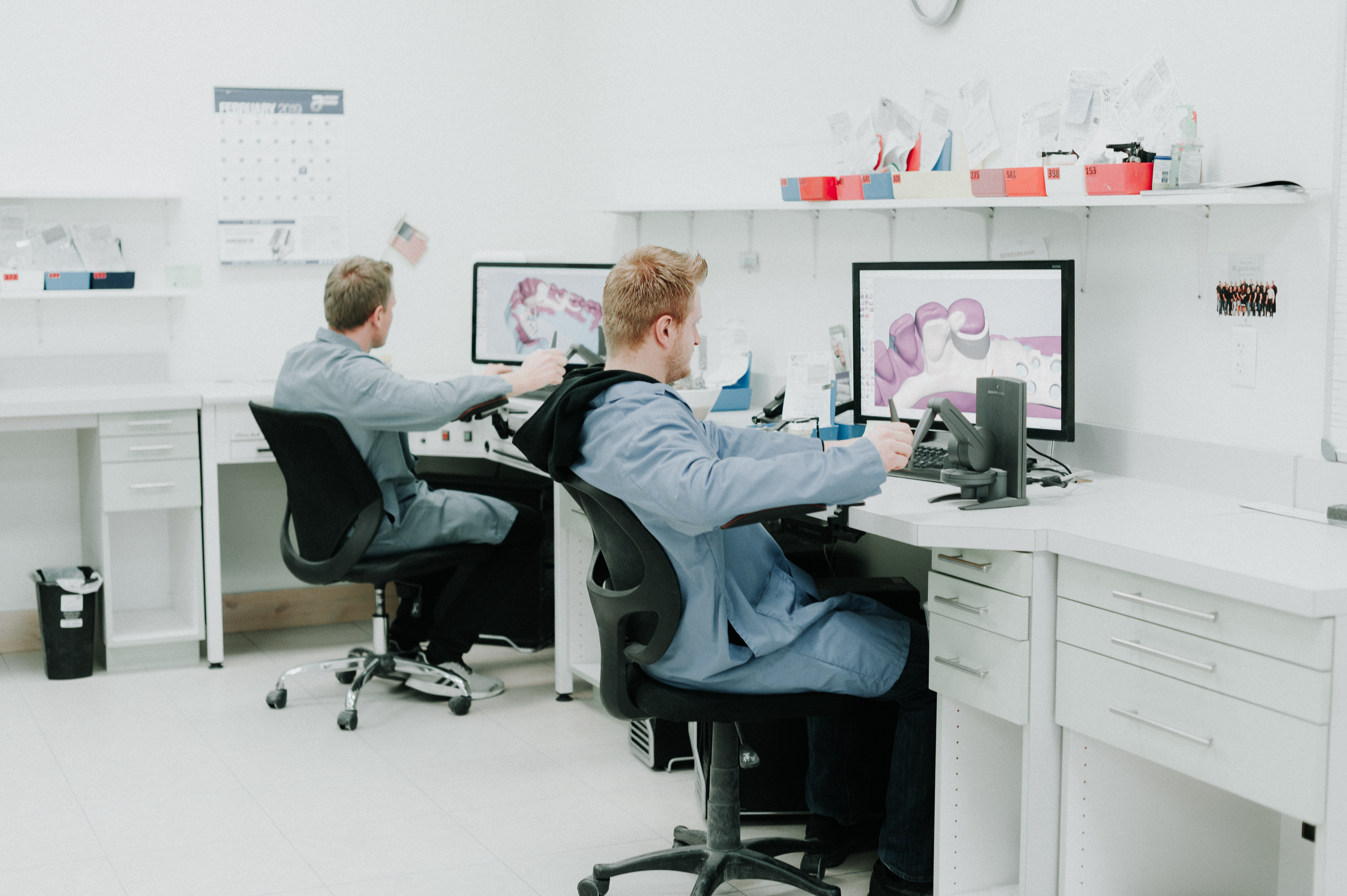
Remember: a denture reline is an attempt to restore an existing denture to proper form, fit, and function — it is not a new denture. If the bite is off or the denture is in poor condition to begin with, a reline is a waste of time and money, and it will not help the patient.
If you have determined a laboratory reline will help, how do you help your dental lab achieve the best results possible? What records would they like to have in order to make the process run smoothly? Below is a practical technique that works.
- Examine the bite with the denture in place.
- Remove any undercuts.
- Roughen the borders and the tissue side of the denture.
- Create a minimum of three tissue stops with modeling compound (one in the anterior and two in the 2nd molar areas) to maintain the current VOD.
- Insert the denture with the warm compound in place and have the patient bite into maximum intercuspation. Allow the compound to cool, then remove the denture from the mouth.
- Adjust the compound to remove any undercuts. Reinsert and check for stability and proper occlusion.
- If the borders of the denture are short, border mold the denture in the mouth using compound or rope wax to extend the borders.
- Try the denture back inside of the mouth. Be certain the denture is stable and resting only on the tissue stops. The denture must fit passively with the patient in occlusion. If not, remove additional acrylic from the holes left by the housings and try again.
- Apply adhesive to the underside of the denture.
- Fill the denture with medium-body polyvinyl siloxane (PVS) impression material.
- Syringe light-body PVS around the implant impression copings.
- Align the overdenture and fully seat it until the denture rests entirely on the tissue stops.
- Have the patient close into maximum intercuspation. Allow the impression material to fully set.
- Remove the denture from the mouth and trim any excess impression material. Make sure the impression copings are held securely in place within the impression.
- Remove block-out rings.
- Snap implant analogs into the impression copings within the impression.
- Take an impression of the opposing arch.
- Remove the metal implant housings from the denture. Enlarge the holes left by the housings.
- Place block-out rings around the implant abutments. Snap impression copings onto each implant abutment.
Send the impressions with your written laboratory prescription to the dental laboratory for processing.
Remember to include the brand and type of implant system being utilized. Also include any information about the baseplate material that was originally used to make the denture, if you have it. A denture made from Eclipse will require different processing than a denture made from Lucitone 199.
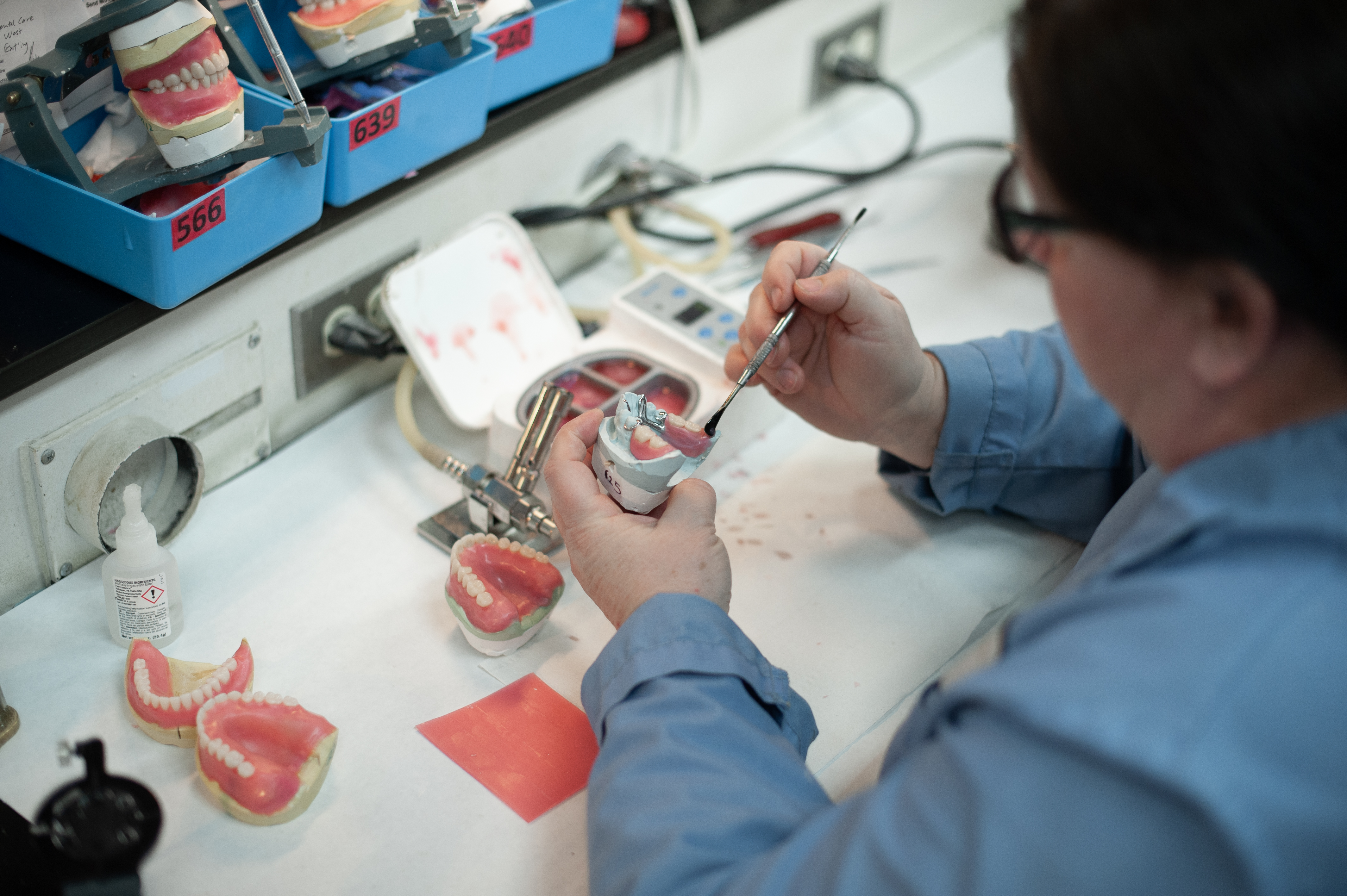
Why is it a good idea to take an opposing impression? Things happen. Sometimes the denture will break during processing, especially after being thinned or hollowed out for the implant housings. Sometimes, due to the condition of the acrylic, a full denture rebase is a better solution than a reline. I am a firm believer in providing the lab technician with everything they could possibly need while the patient is in the dental chair. It takes only a few minutes to take an opposing impression. Nothing diminishes patient confidence more than a phone call telling them that they need to return to the office for additional records or a new impression.
Stomadent Dental Lab is your go-to source for laboratory-processed denture relines and rebases. As one of the best and most reliable dental labs serving practices in Idaho, Montana, Washington, Oregon, Wyoming, and the surrounding areas, our denture lab technicians have the training, expertise, and years of experience to extend the life of your patient’s old denture and turn it into a denture that will look new with improved fit. Same-day denture reline service is available within the Treasure Valley area. Contact us today to get started — we are your dental clinic’s partner for denture services! Get your starter kit from us today to see how great our work is. Once you have used our dental laboratory, we know that you won’t want to work with anyone else!

![Hybrid Denture with Titanium Bar [Best Methods + Advantages]](https://stomadentlab.com/wp-content/uploads/2024/01/dental-prosthesis-on-dark-background-2023-11-27-05-06-28-utc-scaled-500x383.jpg)
![The Lucitone Denture Advantage [Best Practices + Advice]](https://stomadentlab.com/wp-content/uploads/2022/08/lucitone-promo-1-500x383.jpg)
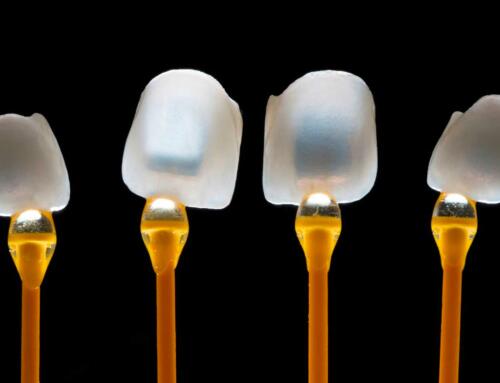
![How to Remove Snap On Dentures [Expert Guidance]](https://stomadentlab.com/wp-content/uploads/2023/12/a-denture-in-a-glass-of-water-dental-prosthesis-c-2023-11-27-04-50-54-utc-scaled-500x383.jpg)

